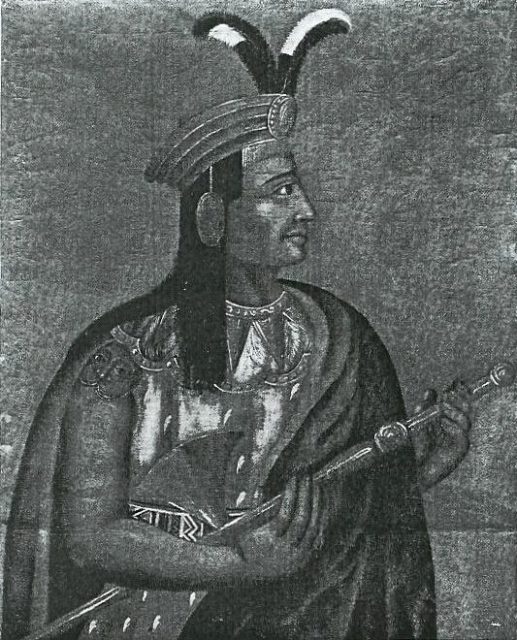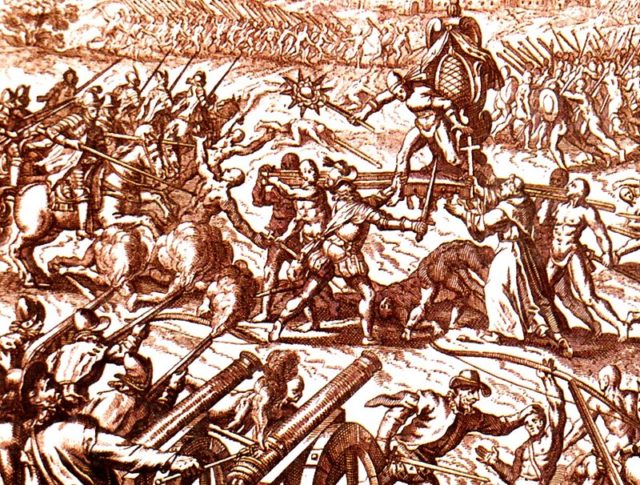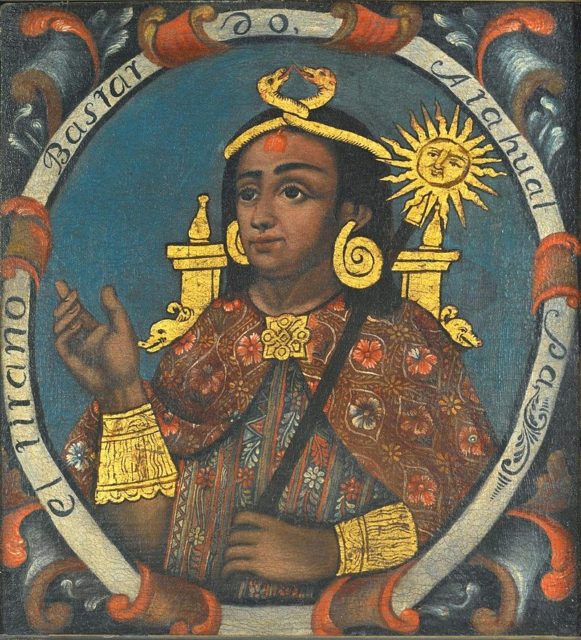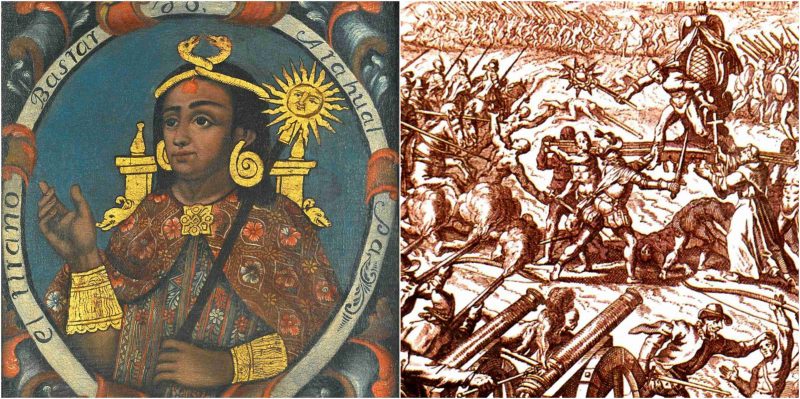All history is a blend of fact and legend. In the life of the young Inca emperor Atahualpa, it is a fact that he was treacherously kidnapped and executed by Spanish conquistadors, while the legend is whether or not part of the massive ransom his subjects were to pay to his captors remains hidden in the Andes Mountains.
Atahualpa became Lord of the Inca Empire in the 16th century after defeating his brother Huáscar in a civil war. All was well until Spanish explorer Francisco Pizarro arrived.

Pizarro and his band of 160 sullied conquistadors had been exploring the western coast of South America for two years, searching for a rumored wealthy empire in the Andes. In November of 1532, they found the town of Cajamarca – along with Atahualpa. Upon the arrival of Pizarro and his crew, Atahualpa was not concerned since he was protected by a loyal army of thousands of men. What he did not know is that Pizarro was already aware of the Inca emperor’s powerful army, as well as the enormous amounts of silver and gold carried by Atahualpa and Inca nobility. Pizarro was also familiar with how Hernán Cortes had captured the Aztec emperor Montezuma to acquire vast riches, and Pizarro was ready to do the same.
Pizarro positioned his heavily armed conquistadors around Cajamarca. He then sent a priest, Father Vicente de Valverde, to meet with the Inca nobility. The priest showed them a Christian breviary, which they found unremarkable and threw to the ground. The Spaniards took this as a sacrilegious action on the Inca’s part and swarmed into Cajamarca’s square, massacring Inca nobility and warriors as cannons thundered. Conquistadors on horseback chased down frightened natives trying to escape. Clad in heavy steel armor, the Spanish did not have a single casualty from the battle. Atahualpa was captured, and the aftermath of the battle between the Incas and the Spanish left thousands of Inca civilians, soldiers, and nobility dead.
Pizarro met with Atahualpa, who was being kept under close watch at the Temple of the Sun. Atahualpa was permitted to speak with some of his surviving subjects as a native interpreter translated everything into Spanish for Pizarro to understand. The young emperor realized that Pizarro and his conquistadors wanted gold and silver; they had quickly looted temples and other locations in Cajamarca. The Spanish told Atahualpa that he would be released for the right amount of gold and silver. This was no problem for Atahualpa, and he gave a colossal offer that stunned the Spanish – the emperor declared that he would fill a room of 22 feet in length and 17 feet in width with gold and silver up to eight feet high.
The Spanish seized on the offer and even had it notarized. Atahualpa gave word to his subjects, and porters soon delivered the fortune of gold and silver to the Spanish from all locations of the Inca empire. As Atahualpa waited for his ransom deliveries to finish arriving, his empire fell into pandemonium.

Surviving Incas, who viewed their emperor as semi-divine, would not risk attacking the Spanish to rescue Atahualpa for fear he would be killed. His brother Huáscar was still alive and being held prisoner, and Atahualpa feared he would escape and become the new emperor. Atahualpa quickly ordered his brother’s death.
Atahualpa still had three huge armies in the empire under his finest generals Quisquis, Chalcuchima, and Rumiñahui. They learned their emperor had been taken prisoner by the Spanish, but they decided not to attack. Unfortunately, Chalcuchima would be deceived and captured by Francisco Pizarro’s brother, Hernando. Quisquis and Rumiñahui took up the fight against the Spanish in the following months.
By 1533, the Spanish conquistadors were hearing rumors that Rumiñahui, the best of all the Inca generals, and his giant army were preparing for a fierce battle against the Spanish. No one in the Spanish camp knew where the Inca general was. Francisco Pizarro acted on the rumors, sending men out in all directions to find the Inca army, but they found nothing. The Spanish were now concerned about an attack and viewed Atahualpa as a dangerous burden. In a panic, they tried Atahualpa for treason, claiming he had ordered Rumiñahui to rebel and executed the last free emperor of the Inca empire on July 26, 1533.

Atahualpa’s ransom was paid, and it was phenomenal. The room, as he promised, was filled with gold and silver even as greedy conquistadors demolished priceless objects so that the room would fill up less quickly. The loot even included Atahualpa’s 15-karat gold, 183-pound throne, which Francisco Pizarro received as a “gift”.
Once all of the ransom was melted down, it weighed in at over 13,000 pounds of gold and over 26,000 pounds of silver. After paying the 20% tax imposed on conquest loot by the King of Spain, the 160 conquistadors received portions of Atahualpa’s ransom according to their rank. Even the lowest soldier’s portion would be worth more than $500,000 in today’s market. Francisco Pizarro, aside from his “gifts”, got 14 times the portion of his fellow conquistadors, About Education reported.

The saga of the Incas and their emperor Atahualpa is certainly tragic. The story lives on in factual history, but another part of it has survived as a legend. Based on cursory historical documents, some believe that the Spanish conquistadors did not receive all of Atahualpa’s ransom. According to the legend, a group of Inca natives was on its way to Cajamarca with gold and silver when they heard that Atahualpa had been executed. The general in charge decided to hide the treasure in an unidentified cave within the Andes.
Purportedly, a Spaniard named Valverde discovered it 50 years later, but it was lost again until a man named Barth Blake found it in 1886. Blake later died under dubious circumstances, and no one has seen the lost Inca treasure since. Thus, the legend continues.

Is the last payment of Atahualpa’s treasure hidden in the Andes? If so, it would mean that part of his legacy still exists for experts to discover and study.
It would also be a fitting comeuppance for the long-dead conquistadors, who believed they had stolen all that the Inca empire had to offer.
